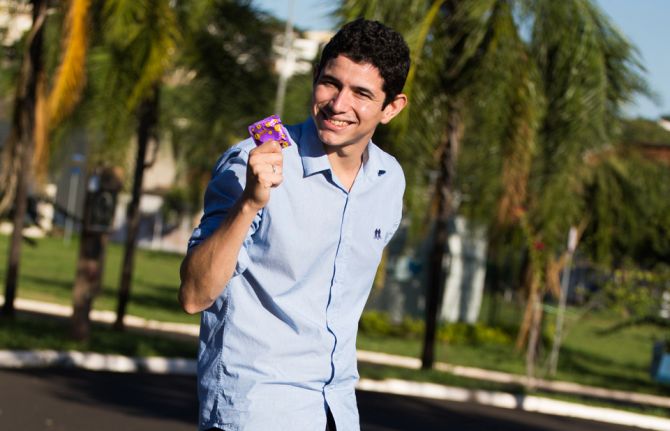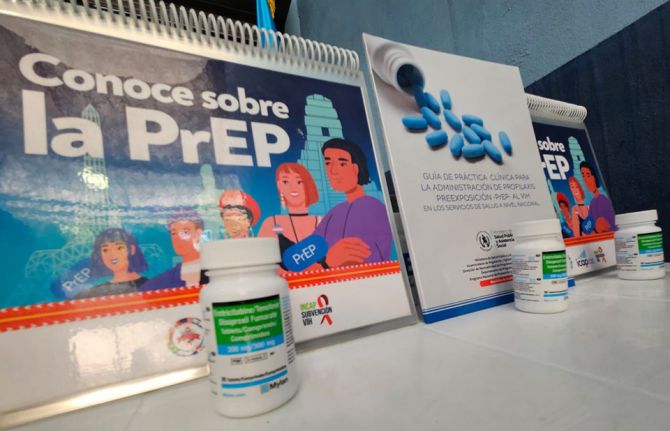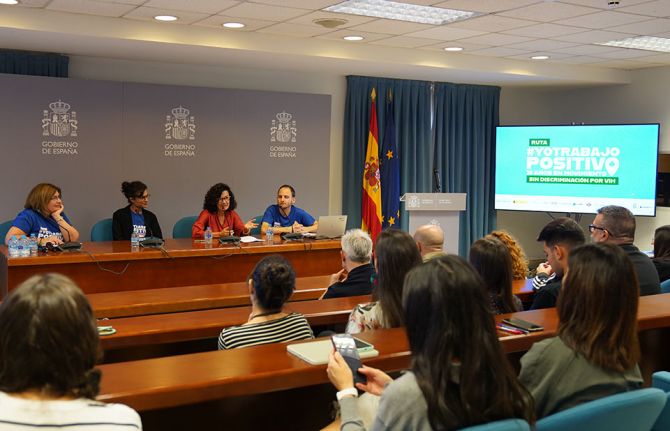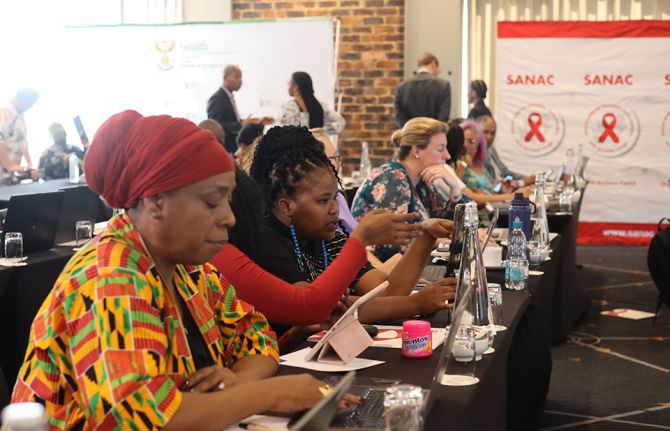

Feature Story
Universal access to top-of-the-line medication in Brazil
14 July 2017
14 July 2017 14 July 2017The 2030 Agenda for Sustainable Development takes to scale what the AIDS response has been working towards for 30 years—a multisectoral, rights-based, people-centred approach that addresses the determinants of health and well-being. The individual stories in this series highlight the linkages between HIV and related Sustainable Development Goals (SDGs), each told from the personal perspective of people affected by HIV. The series paints a picture of how interconnected HIV is with the SDGs and how interdependent the SDGs are with each other. Most importantly, the stories show us the progress we have achieved with the AIDS response and how far we have left to go with the SDGs.
New Year celebrations took a turn for the worse last year for Welber Moreira. The 23-year-old Brazilian found out he was living with HIV.
He described feeling ill the day after Christmas, so he went to a public health clinic to get some answers. Instead, the doctor posed a startling question. He asked me, “‘Can I see your most recent HIV test result?’” Welber had never thought that a virus from some long-gone biology class would ever affect him. The doctor told him to go to one of the public voluntary counselling and testing centres in his hometown of Ribeirão Preto, north of São Paulo, where he took a rapid HIV test. His positive diagnosis was confirmed by a second test.
“After all the crying in front of the nurse, I thought of my girlfriend, because we had not been using condoms,” Welber said. His girlfriend tested negative for HIV. She began her 28-day prevention treatment even before Welber started taking his own antiretroviral medicine. Brazil’s public health system covers all HIV prevention and treatment costs, which made it easy for both of them to start taking medicines.
Something else worried him. “I was very scared and afraid of the side-effects,” Welber said. Surprisingly, he said, he has felt fine since starting his HIV treatment. Now, before going to bed he takes two pills a night. Shrugging his shoulders, he said, “I can’t imagine what it was like in the past, to take several pills a day, at different times.”
He is among more than 100 000 Brazilians to be given a new HIV medicine called dolutegravir (DTG), which has fewer side-effects and is more effective. The Brazilian Ministry of Health successfully negotiated to purchase DTG at a discount of 70%, bringing down the price per pill to US$ 1.50 from US$ 5.10. As a result, more people will have access to this new medicine within the approved budget for treatment in the country (which stands at US$ 1.1 billion for 2017).
Welber is thankful for his girlfriend’s support and the efficiency of the clinic and centre, all of which helped him overcome the initial trauma.
Bringing up HIV and his status no longer upsets Welber. He said he speaks openly about it to his friends and at work. A small part of his family didn’t cope well with the news but he has not lost hope.
He has big plans with his girlfriend. “We plan to have two kids, starting three years from now,” he said.
He also said that he feels like he has to help others. “Whenever I can, for example, I pass by the local health clinic and grab some condoms for my colleagues at work and my friends,” Welber said. “It’s an opportunity for me to share what I know and to talk about prevention.”
SDG 9: Build resilient infrastructure, promote inclusive and sustainable industrialization and foster innovation
The scale-up of HIV treatment in low- and middle-income countries over the past 15–20 years is one of the greatest success stories of global health. In sub-Saharan Africa at the end of 2002, only 52 000 people were on treatment. Thanks to increased levels of production and full use of patent flexibilities, the number of people on treatment grew to 12.1 million in 2016. Lessons learned from the AIDS response have gone on to increase access to medicines for people living with TB, hepatitis C and noncommunicable diseases.
Researchers and scientists continue to innovate and improve the efficacy of antiretroviral medicines and to pursue a cure for HIV. Antiretroviral medicines have evolved so a person living with HIV who is taking their medicines regularly can now expect to live a normal lifespan.
When the Brazilian Government granted universal access to antiretroviral medicines in 1996 they changed the course of the national epidemic and increased survival rates remarkably. Dire predictions of large-scale AIDS-related deaths never came to pass. Brazil’s Unified Health System is continuing to lead the way and has recently incorporated the most advanced scientific and medical technology into routine HIV services. Welber’s story tells us how much SDG 9—build resilient infrastructure, promote inclusive and sustainable industrialization and foster innovation—is interwoven with increasing equitable access to medicines and achieving progress on ending AIDS.
Learn more about SDG Goal 9
Region/country
Related
 Multisectoral resilience to funding cuts in Guatemala
Multisectoral resilience to funding cuts in Guatemala

22 December 2025


